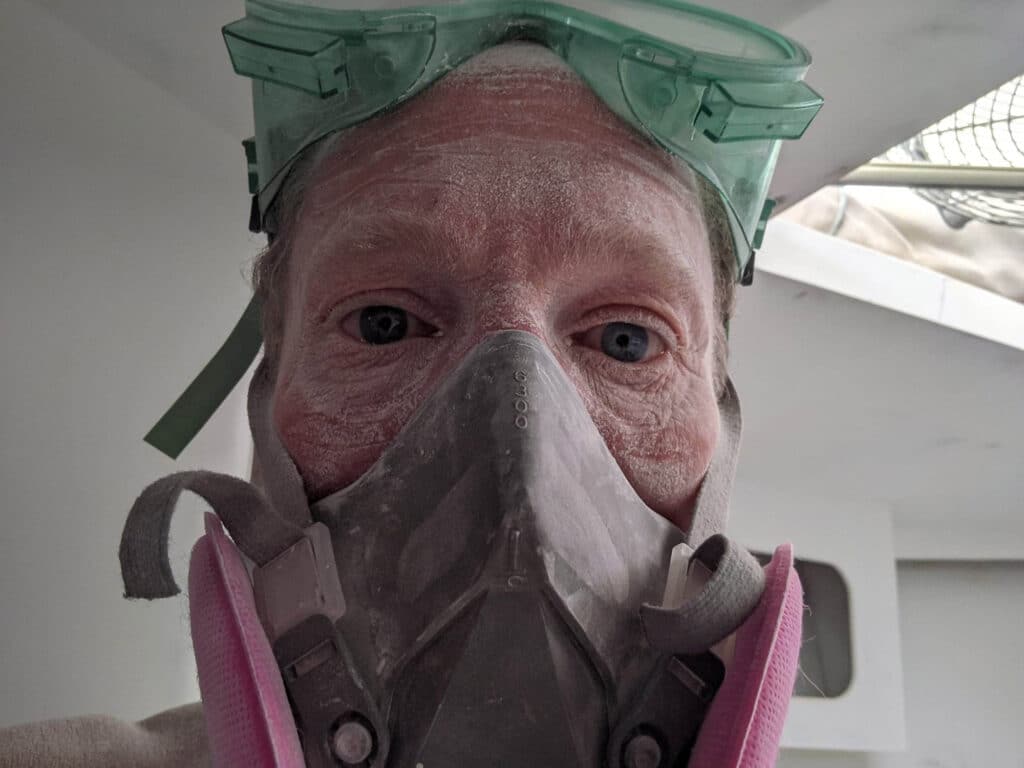
We’ve crossed major milestones in Totem’s refit, and I’ve included the highlights here. But first, a shout-out to the guy making it happen. Jamie is at the boatyard seven days a week, virtually without fail. Refit realities don’t make for sexy social media posts. What is sexy, though,
is the commitment of this guy to getting the job done, and done right, as we bring Totem into the 21st century.
The work is hard on his body. It’s repetitive. It’s not fun. It’s emotionally wearing. We’ve passed major milestones, but there are days that forward progress feels thwarted. There seems to be a natural law about boat projects taking more than the expected time—at more than the expected cost—and we are internalizing it with our slow progress. Yet, ultimately, there is progress, and it is awesome to see. I’m excited to share the updates. But first, I want to tell you about one of our favorite roles on board.
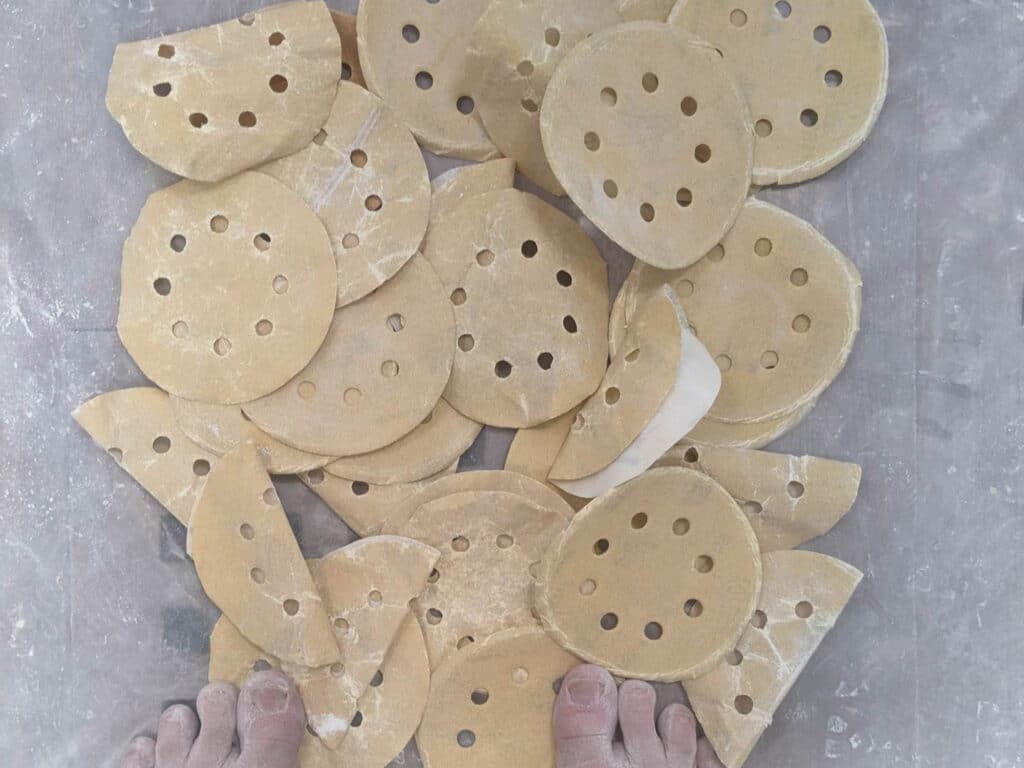
The Happiness Engineer
Who is your “happiness engineer?” At some point, every boat needs one. Typically, we use this moniker during the transition from land to living aboard to describe the person for whom cruising was “the dream,” and upon whom it is incumbent to ensure that their partner has a positive reality. Right now, the happiness engineer is a role I take on to make sure that Jamie’s laser focus on finishing the refit includes breaks to enjoy life, heal his body and soul, and stave off burnout. Sure, I’m working hard, too—long hours in other roles. But it’s easier to be a keyboard warrior. Recently, I stole Jamie away from the yard for a three-day trip out of town so we could remember what it’s like to be living as travelers instead of refit grunts.
Getting away was more than a break from work. It was reconnecting to an important way we find our joy in cruising: by engaging with, and learning from, the different cultures we intersect with. The best of those experiences are what I refer to as “walking on the moon,” because they transport you so thoroughly into another world that sharing the experience defies explanation. (How can you effectively explain to someone what it was like to walk on the moon?)
An Indigenous New Year
A few weeks ago, I had learned from a friend that the Comcáac (first nations people from the northeast coast of the Sea of Cortez—also referred to as Sierra Seri) New Year was in the last days of June. Our friend, Ruben, organizes small-group trips. He planned a trip for us all to witness and participate in the New Year ceremonies, bringing along an indigenous guide to help us understand. We went, and we walked on the moon. From the moment we arrived, we were enveloped by reminders of a very different way of life. Pressed by adversity, Comcáac people have held tightly to traditions and language, and we had much to learn.
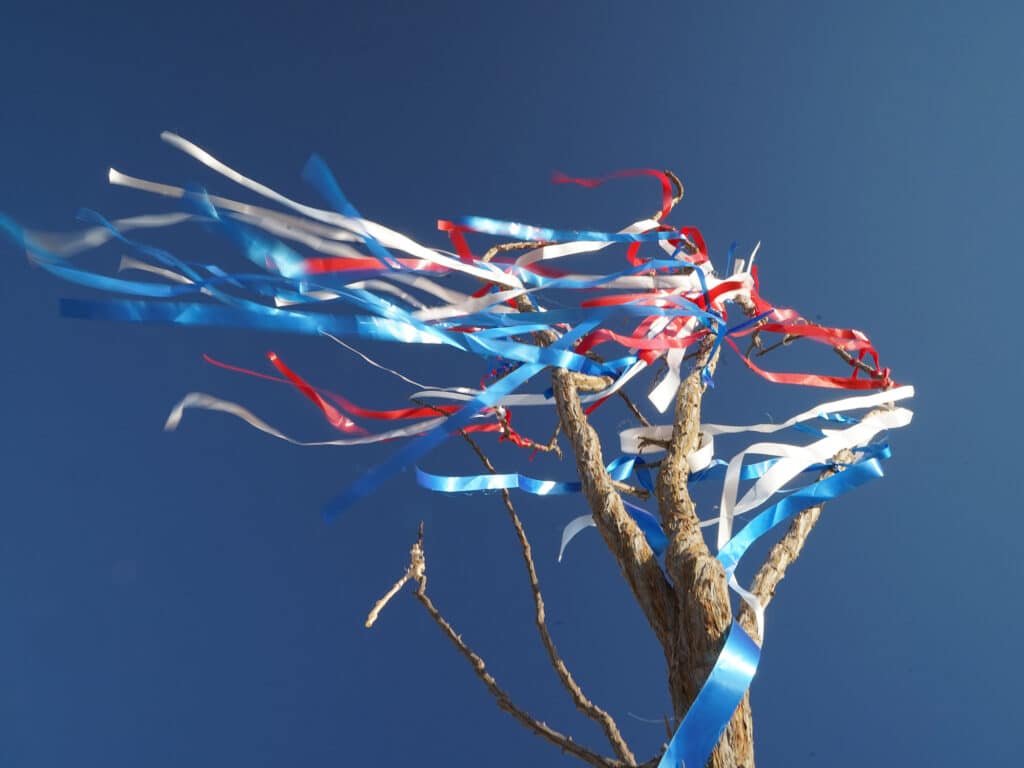
At the ceremony, red, white and blue ribbons, the color of the Comcáac flag, fluttered from bent cactus armatures on the beach. The chanting of elders was carried over loudspeakers, accompanied by the sound of the waves breaking on the beach.
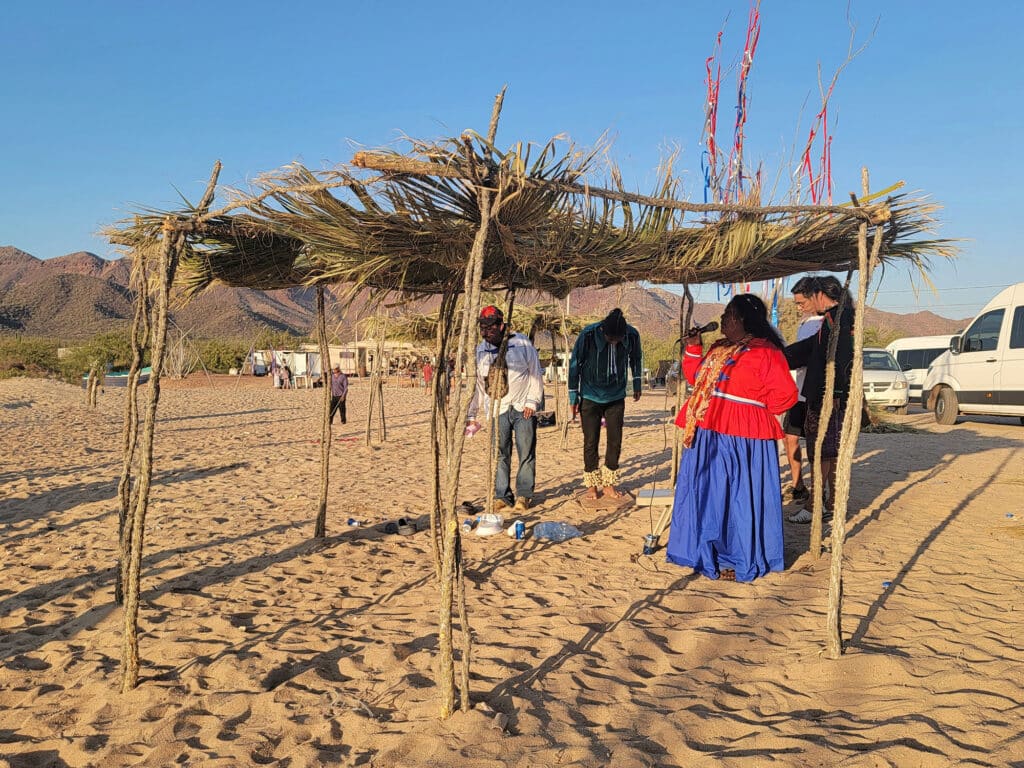
Blazing sun and temperatures in the triple digits beat down upon the women and girls who wore vibrant, ankle-length skirts and flounced, long-sleeved blouses. After crossing the channel to the sacred Isla Tiburón, a Comcáac shaman included us in the traditional face painting and spiritual cleansing. It was some marvelous moonwalking.
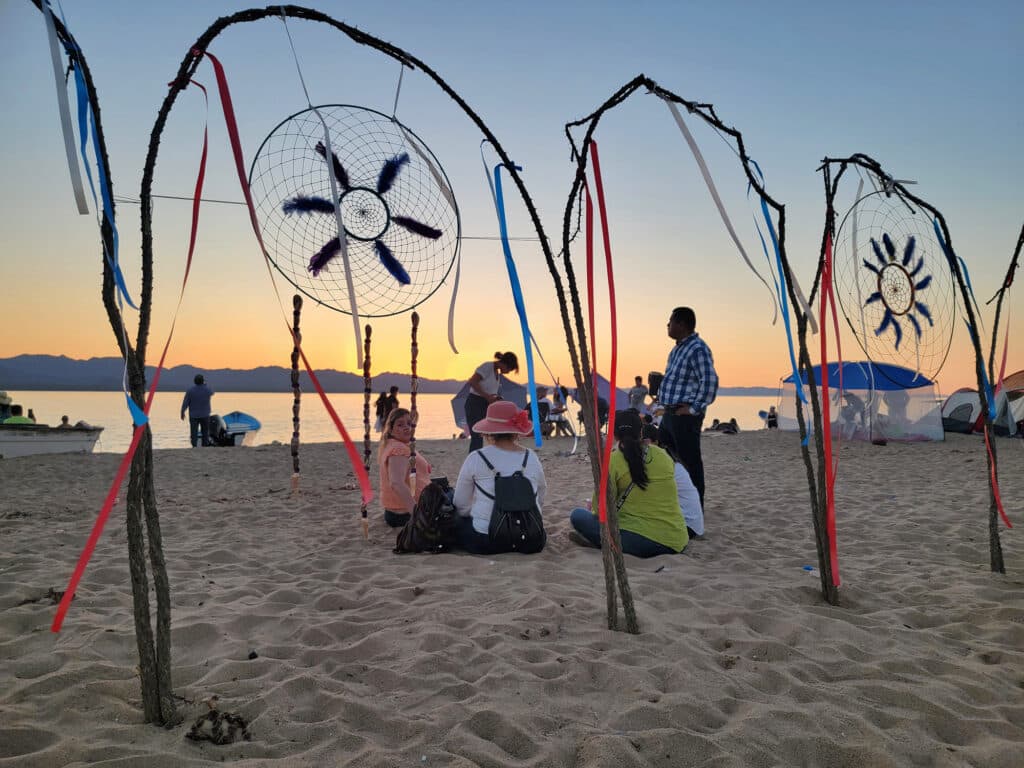
We returned to the mainland to join in the feast and enjoy the music. As sunset turned the sky from gold to purple and then black, the beat of gourd drums, the rattle of shell cuffs on the legs of the dancers, and the jingle of bells hanging from their belts filled the air. We watched the dancers’ movements mimic the deer they represented, while mounted deer heads were strapped to the heads of the Yoreme brothers who were invited to join the event.
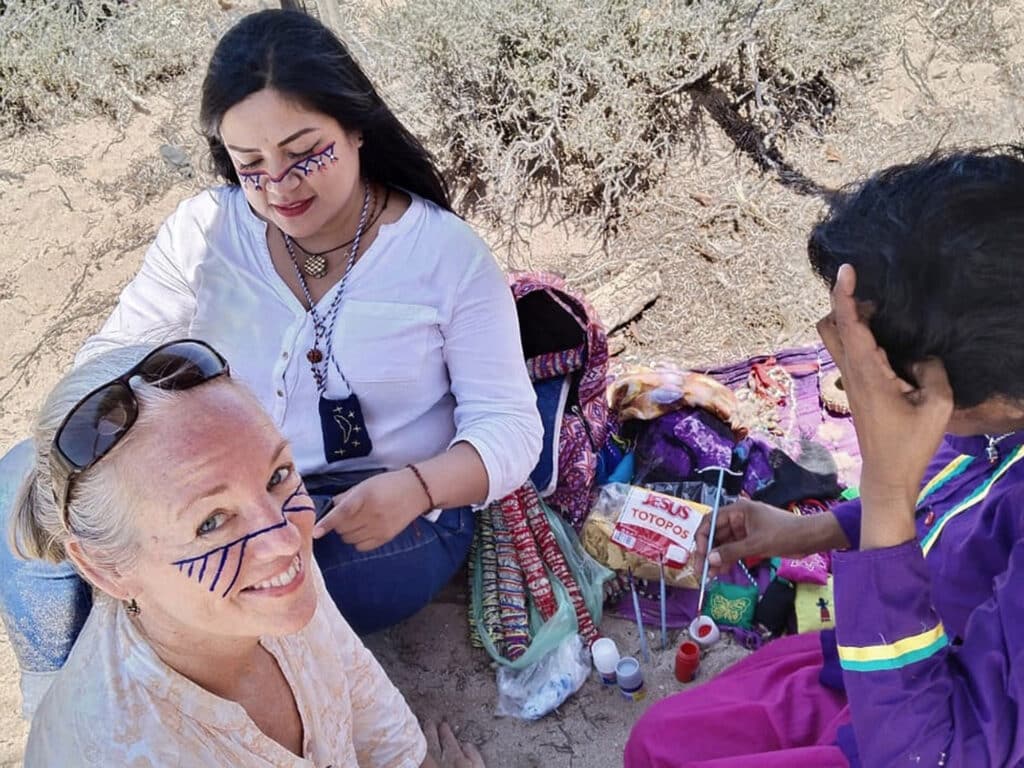
Deep in this moonwalk, fresh artists soon stepped in and worlds shifted. The crash of modern rock music wasn’t that jarring, but what seemed at first like a collision of cultures leveled up into something mind-blowing. The musical was familiar, but the lyrics were being belted out in Cmiique iitom, the Comcáac language. Those same women and girls in head-to-toe jewel tones now jumped up and down, singing along, screaming song requests and Comcáac of all ages and genders threw themselves enthusiastically into the celebrations.
It was spectacular.

The music capped off a day steeped in tradition, and it demonstrated how Comcáac are finding ways to bring their cultural roots forward into the modern world. Hamac Caziim, the rock band, was founded on the belief that rock music will to help foster an interest in retaining the indigenous language. To our experience, I’d say that they have been wildly successful in engaging more than just the younger generation.
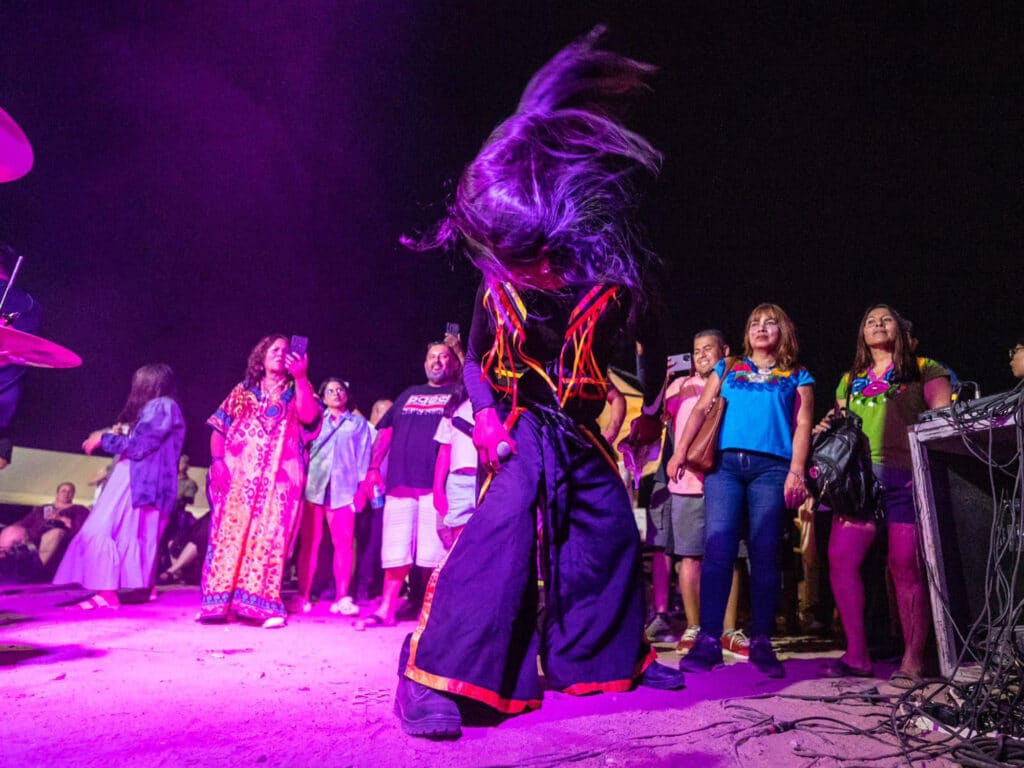
Back to Totem: Interior Finishes
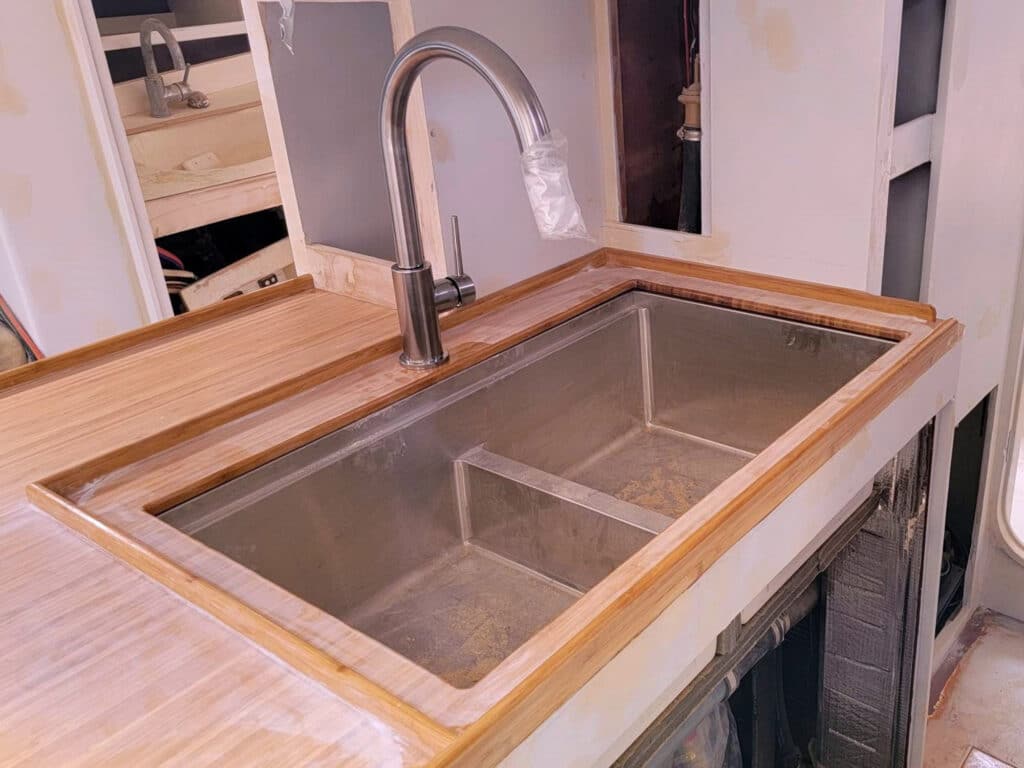
Back in Puerto Peñasco, Totem’s interior work has reached major milestones. We didn’t start this refit thinking we’d resurface the whole interior. We just knew that the cabin sole was suffering in a few areas, that some bulkhead rot needed to be addressed, and that the Formica in parts of the galley had worn through to particle board. Those tasks were addressed, and they made it easier to add on some voluntary cosmetic work.
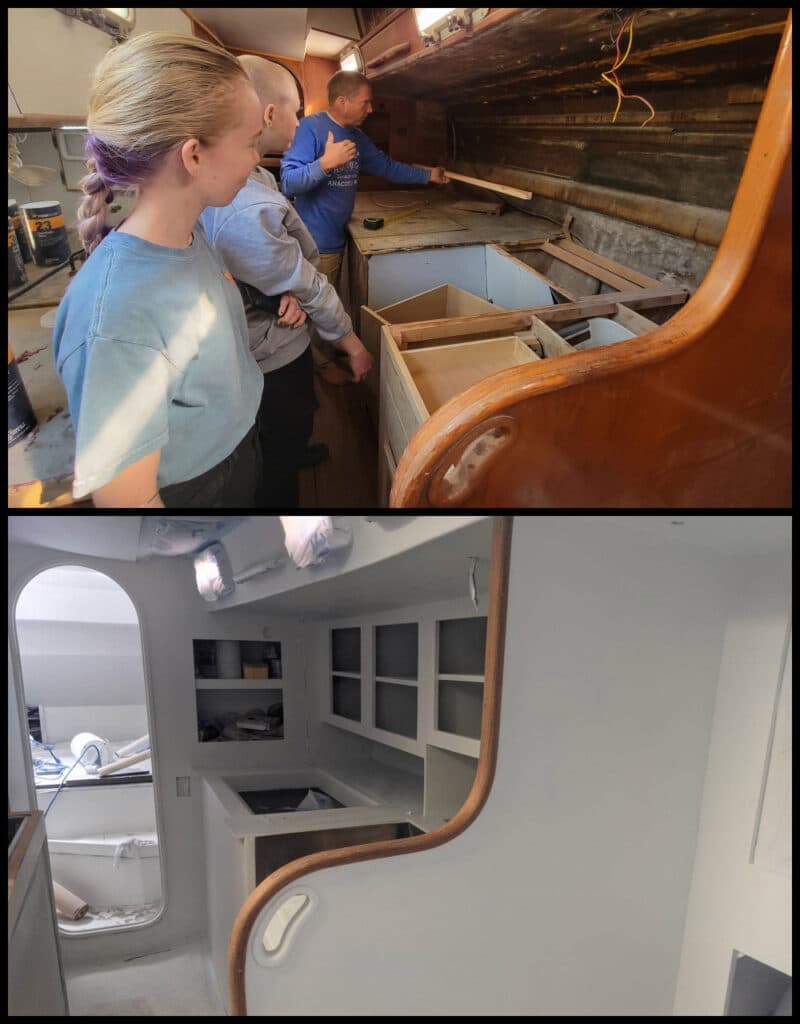
We realized that the dinged-up, 41-year-old veneer, the junky headliner, and horizontal surfaces such as the table and countertops would all need replacement. Jamie crafted a simple, elegant solution for the headliner from insulation, thin plywood and alder battens—oh, and a lot of epoxy! We replaced the horizontal surfaces, originally wood veneer, by bamboo, which seems to glow from within, restoring some natural warmth to the cabin.
Suddenly, the huge undertaking to look nice, stay more comfortable and be ready for faraway cruising feels like it’s coming together.
We’ve learned so much along the way. When Jamie first rebuilt a bulkhead on Dogwatch, his 22-foot S&S Sailmaster, around 1984, it felt significant. Now he’s rebuilt entire cabins. He’s learned about fillers, materials and how to apply accumulated years of knowledge about Totem along the way, making her our long-term home, and now hopefully easier to maintain—at least as much as any boat can be.
Want to learn more about Comcáac?
- NY Times: An Intimate Look at Mexico’s Indigenous Seri People
- Video: Seri turtle songs of survival (Spanish with subtitles: Comcáac history in <15 min)
- Video: Hamac Cazíim | an indigenous punk documentary (29 min: the Comcáac rock band we heard)
- Creative Pinellas: Seri Tribe (konkaak / comca’ac) of Sonora Mexico
- Sonora tourism: indigenous people of Sonora
- Mexico Escultura: Seri New Year
Totem Talks
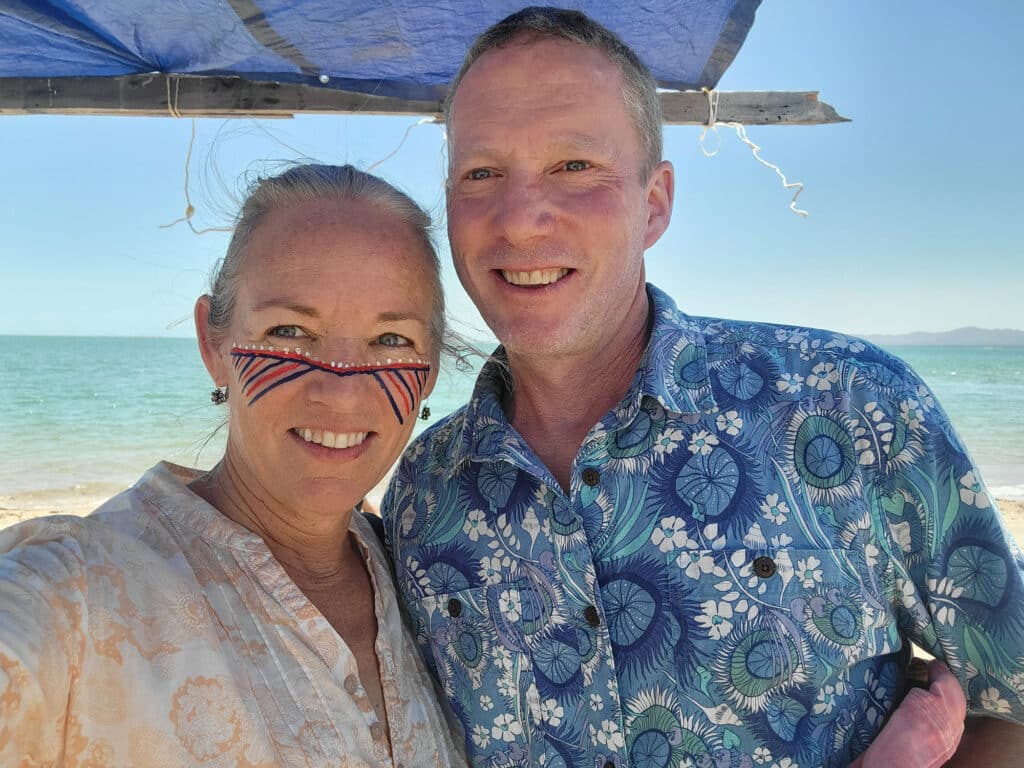
Our free, monthly livestreamed talks cover topics of interest pertinent to cruisers. Coming up this month: Tools and Spares. It’s tempting to bring everything you might need. Unfortunately, it’s impossible to bring everything you will need. How do you decide what’s essential to have on board for tools and spares? Register here to join the session. Other recent topics include getting sails for your boat. How do you know when it’s time to replace your sails? What is the process like? What should boat owners know about evaluating options? Also, don’t miss our adventures while anchoring. This talk covers key anchoring techniques and discusses how to figure out where you can anchor and how to deal with anchorage politics.








